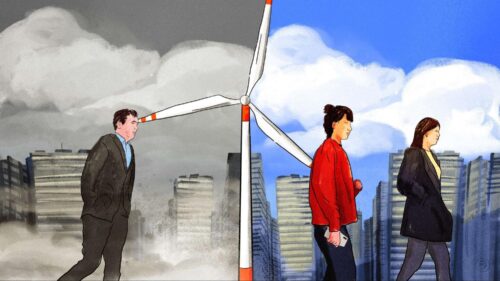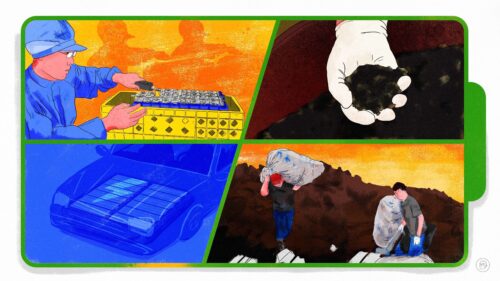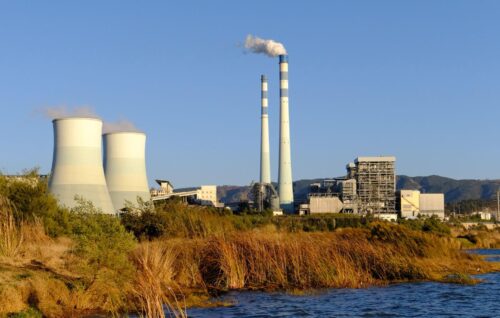The rise of China’s biodegradable plastics industry
Like the rest of the world, China is plagued by plastic, but it is also active in the new industry of degradable plastic products.

Last week, the Ministry of Ecology and Environment held a press conference on marine pollution. While outlining the ministry’s activities to collect and recycle microplastics, an official took out a mobile phone case constructed from pieces of recycled plastic that were collected by Chinese fishermen: By scanning the QR code, one could trace the source of the phone case and see who picked up the plastic and who shipped it.
Earlier in May, the ministry released a bulletin on the state of China’s marine ecosystems:
- The average density of floating garbage on the sea surface in China’s coastal waters is about 3.6 kilograms per square kilometer (eight pounds per square mile), which the bulletin described as medium- to low-level based on international survey results.
- The water quality of estuaries and bays drew greater concern, however: In 2021, 21,350 square kilometers (8,243 miles) of sea area were found to have inferior water quality.
- The bulletin concluded that the environmental quality of China’s major sea areas is generally good, but the water of rivers entering the sea is mildly polluted.
The main culprit is plastic: Of floating debris, beach debris, and submarine debris, plastic accounted for 92.9%, 75.9%, and 83.3%, respectively.
China is the world’s largest producer and consumer of plastic: In 2020, a total of 90.87 million tons of plastic was consumed in China. Up to 3 billion plastic bags are consumed in China every day, of which a third is used for grocery shopping. The total annual value of packaging consumed by the supermarket industry is as much as 5 billion yuan ($746.79 million), most of which are plastic shopping bags.
The degradable plastics industry is still at an early stage of development and commercialization. Aside from the medical industry, only a few products have attained large-scale commercial production and application, including:
- Polylactic acid (PLA), a bioplastic polyester (but with a very slow rate of decay).
- Polybutyrate adipate terephthalate (PBAT), a biodegradable alternative to low-density polyethylene.
- Polybutylene succinate (PBS), a thermoplastic polymer resin that degrades naturally in about six weeks.
In 2021, there were 42,082 registered companies focused on plastics recycling in China, a year-on-year increase of 59.4%, but one company stands out as the clear early mover: Kingfa Sci & Tec 金发科技.
- According to its 2021 annual report, Kingfa has an annual PBAT production capacity of 180,000 tons, and is constructing a PLA plant with an annual output of 30,000 tons, which is expected to be launched in 2022.
- Kingfa’s biodegradable plastics have been used for disposable packaging and other uses in several industries, and the company’s customers include IKEA, Unilever, and Lenovo.
- Kingfa is also one of China’s largest manufacturers of medical masks, and the company has lofty ambitions: By 2030, it plans to produce 1 million tons of biodegradable plastics and another million tons of recycled plastics, and to recycle 1 million tons of waste plastics.
- However: Kingfa has problems of its own: In February 2021, the company’s market capitalization reached a high of more than 80 billion yuan (almost $12 billion), but by late May this year, this had crashed to just over 20 billion yuan (almost $3 billion) following the arrest of the company’s chairman for insider trading.
Aside from Kingfa, a range of new domestic companies are now emerging, for example:
- Red Avenue New Materials 彤程新材 is constructing a PBAT plant in Shanghai with an annual capacity of 100,000 tons.
- In early June, CB Material 中宝新材集团, a manufacturer of biodegradable plastic products, submitted an application for a listing on the Hong Kong Stock Exchange. The company’s total revenues grew from 103 million yuan ($15.38 million) in 2019 to 257 million ($38.38 million) in 2021.
- Tidetron 态创生物, which completed A round financing of $100 million in March, is collaborating with the Nanjing University of Technology and plans to mass produce PBS from this year.
The context
In 2020, non-degradable plastic shopping bags were banned in several Chinese provinces, and on January 1, 2021, a nationwide ban on plastic straws went into effect. Dealing with plastic waste pollution took on further impetus in 2021, when China released the 14th Five-Year Plan Action Plan for Plastic Pollution, which set clear goals for the recycling of plastic waste.
- On May 31 this year, new more specific regulations came into force that set standards and qualifications for companies.
- On June 1, two national standards for biodegradable plastics, aiming to provide clear identification standards for biodegradable products, were implemented in China related to labeling requirements and biodegradable drinking straws.
According to China Customs, in 2021, China’s total trade of biodegradable plastic-related products increased significantly:
- China exported 136,900 tons at a total value of 3.96 billion yuan ($591.90 million), a year-on-year increase of 27.88%.
- The country imported 8,500 tons at a total value of 1.96 billion yuan ($293.04 million), a year-on-year increase of 64.87%, accounting for a trade surplus of about 2 billion yuan (just under $300 million).
According to one estimate, by 2025, the total annual domestic demand for degradable plastics will exceed 4 million tons, which is more than nine times the demand in 2018.
The takeaway
Led by Kingfa and a range of newcomers, a new biodegradable plastics industry is rapidly emerging in China.






